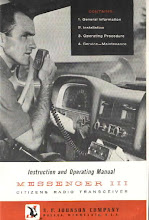 A short text from 1995 written having seen the film screened at La Pagode in Paris one afternoon in the company of many older than JLG's generation.
A short text from 1995 written having seen the film screened at La Pagode in Paris one afternoon in the company of many older than JLG's generation.Godard, not unlike Deleuze, has always thought that "cinema is an instrument of thought". But with Godard, as with Deleuze, cinema will never simply be at the service of thought. Instead it will produce an image of thought. For both Godard and Deleuze, thought/cinema is a "battlefield". That battlefield, however, is not one where is played out a dialectic resulting in the triumphant progress of reason. The words spoken by Samuel Fuller in Godard's Pierrot le fou (1965) accord with Deleuze's interest in what he calls the "dust" of battle: "a film is like a battleground: love, hate, action, violence, death". The latter are categories through which the film passes. For Deleuze, by providing his films with so many "reflexive types" (or conceptual personae) Godard keeps cinema on the battlefield as EVENT and not as essence, perpetrating molecularising stratagems as opposed to molarising strategies. The result is not, therefore, the proud line anchoring the plane to the transcendent, but, rather, the
broken line, a zig-zag line, which brings together the author, his characters and the world, and that which passes between them. Thus modern cinema develops new relations with thought from three points of view: the obliteration of the whole or of a totalisation of images, in favour of an outside which is inserted between them; the erasure of the internal monologue as whole of the film, in favour of a free indirect discourse and vision; the erasure of the unity of man and world, in favour of a break which now leaves us with only a belief in this world. (Cinema II, p. 188).
The film JLG/JLG (1995) sets us on the trail not of one, but of many Godards. Doubling and folding around the inflection of the bar between JLG and JLG the film unfolds as a self-portraiture (and the processual quality of portraiture as opposed to portrait is important) without subject. The elision of the subject by means of an avowed portrayal of the subject named in the film's title (named and unnamed) sees emerge the heterotopic zone of inflection marked in the bar.
Since Eisenstein and Vertov the primacy or not of montage has been a central question for theories of cinema. With Godard, however, montage becomes montrage. Of utilisation of the plan fixe in Godard, Deleuze asserts: it "effectively carries the static shot of cinema to this state where forms dissolve, and all that subsist are tiny varieties of speed between movements in composition". No longer is it a question of the ontological piety of Being, of the copula IS. In Histoire(s) du cinema (1989-1998) Godard himself frequently appears in partial silhouette at an editing table, figured in the atopic, smooth and threshold state - the smooth space - of the space between, the intermezzine space of AND. "Vous-êtes là, là!", the voiceover at the beginning of Soigne ta droite (1987) intones, as an aerial shot points earthwards (the film's subtitle is "A place on earth"), at which point a camera jolt reminds the viewer that they are precisely in this "there" (là), this shifting there, the atopia of which is ciphered in the techne of cinema, now become an irrationality incapable of being made subservient to a rational goal. Godard subjects Heidegger's being-in-the-world to a neo-baroque loosening: being-for-the-world: you are here, AND here, AND here, multiplied across the film of cinema. Your subjectivity is a genre, as one says of Hollywood musical comedy that it is a genre.

No comments:
Post a Comment